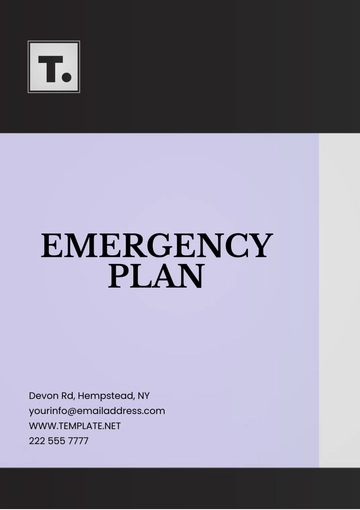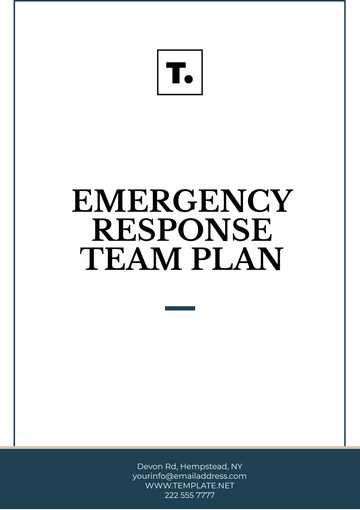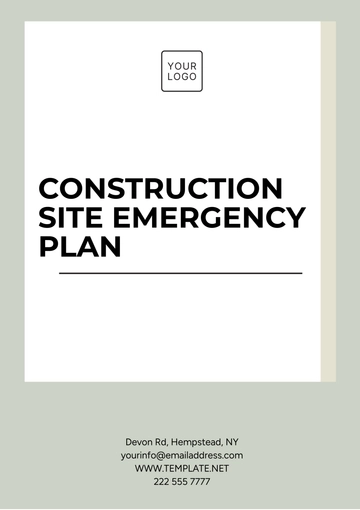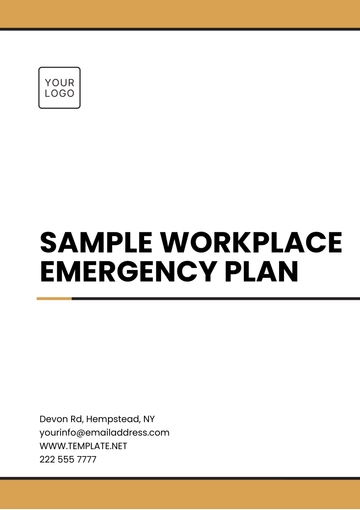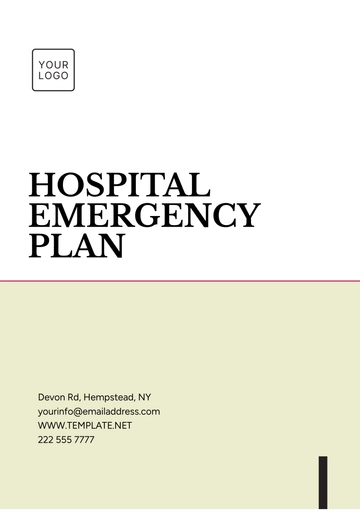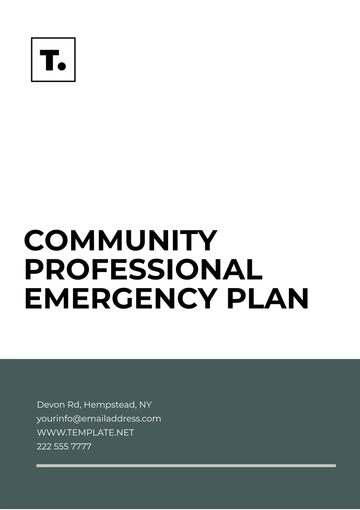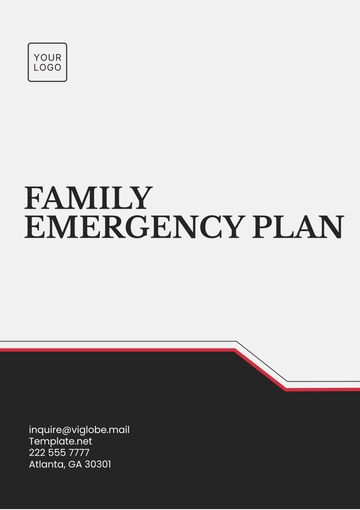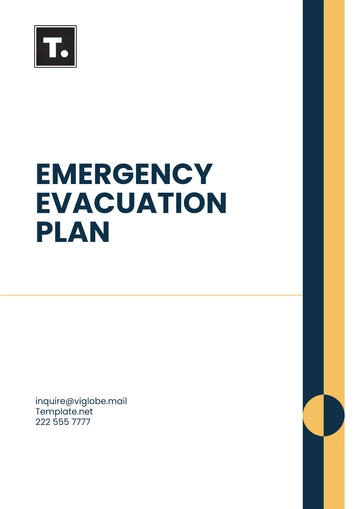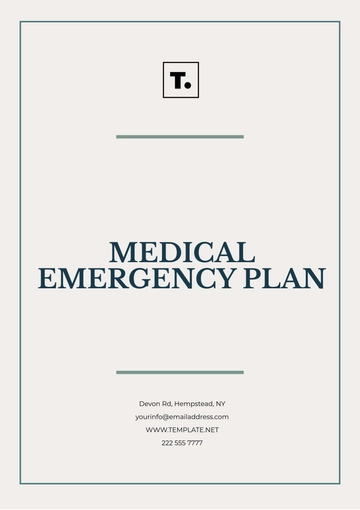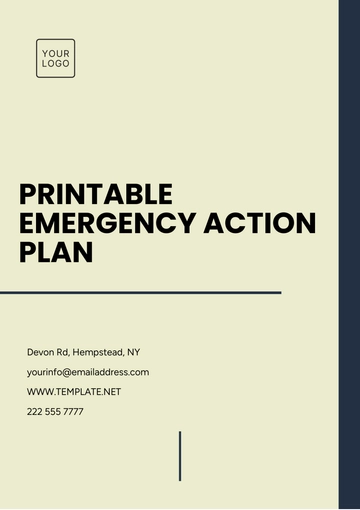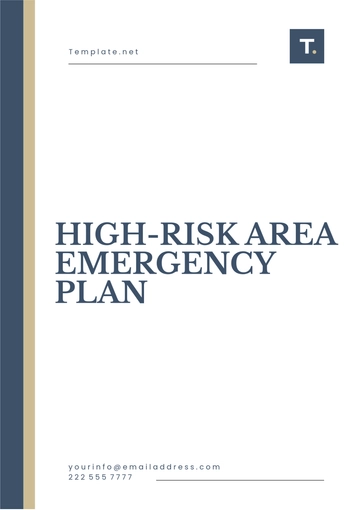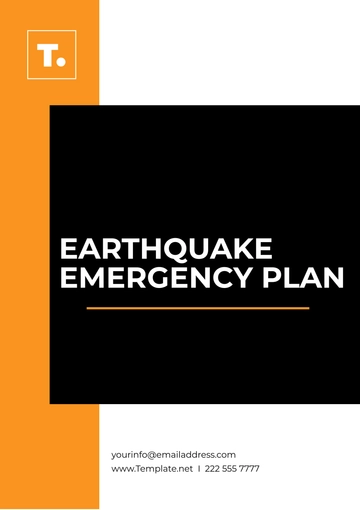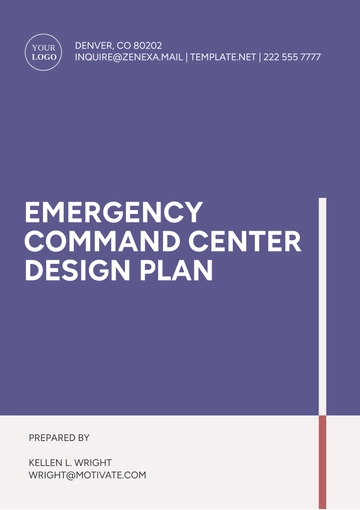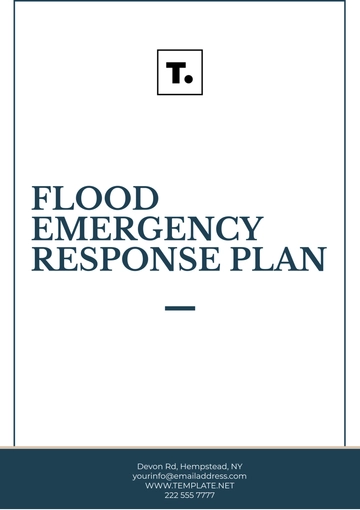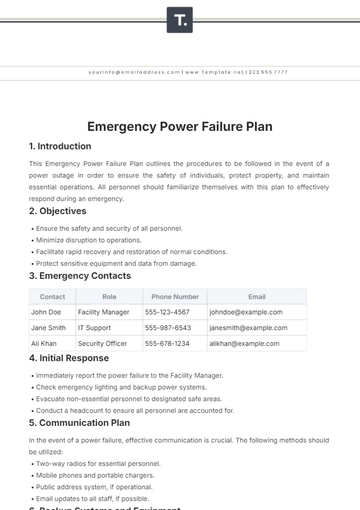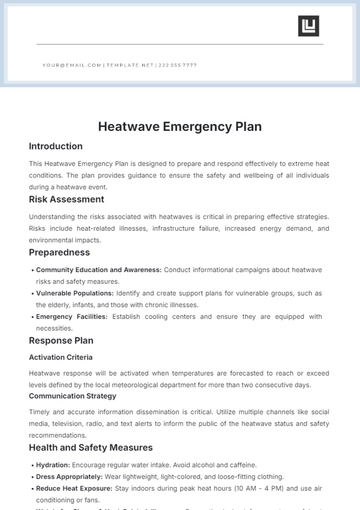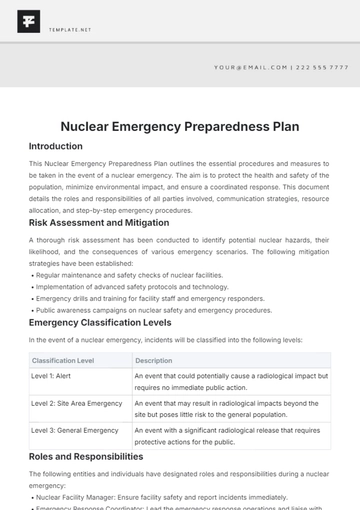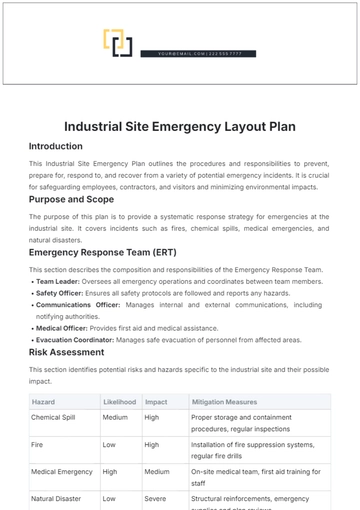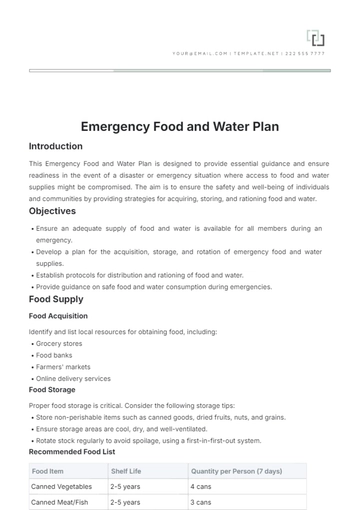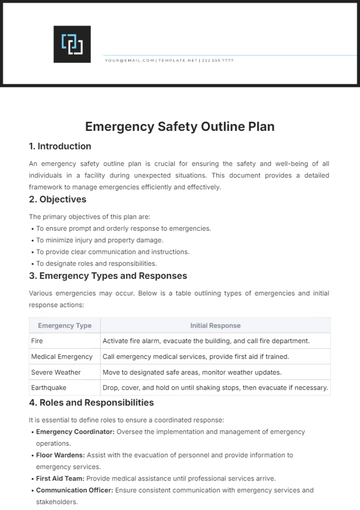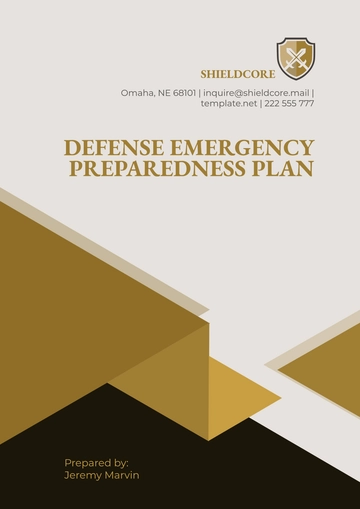Free Construction Site Emergency Plan
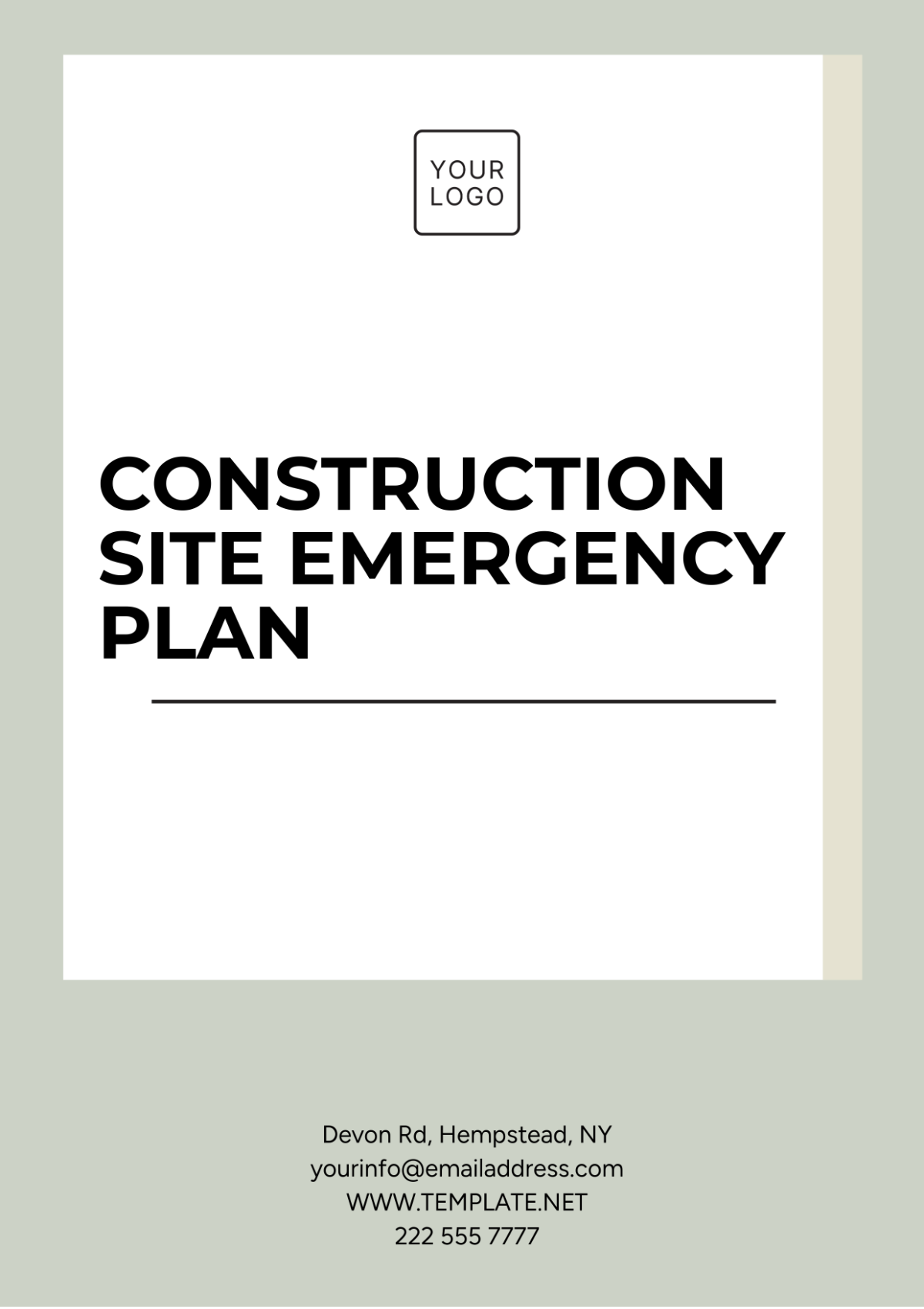
Introduction
Ensuring the safety and well-being of all personnel on a construction site is of utmost importance. An effective emergency plan helps mitigate the risks associated with unexpected incidents, ensuring prompt action to protect lives and property.
Objectives
The emergency plan aims to:
Provide a clear procedural framework for responding to emergencies.
Minimize risks to personnel and property.
Ensure efficient communication during emergencies.
Assign roles and responsibilities to site personnel.
Emergency Contacts
Name | Role | Contact Number |
|---|---|---|
John Doe | Site Manager | [Phone Number] |
Jane Smith | Safety Officer | [Phone Number] |
Fire Department | Emergency Services | [Phone Number] |
Medical Emergency | Ambulance | [Phone Number] |
Risk Assessment
Potential emergencies on the construction site may include fire, structural collapse, medical emergencies, adverse weather, and hazardous material incidents. Regular risk assessments should be conducted to update preventive measures.
Roles and Responsibilities
In the event of an emergency, specific roles and tasks are assigned to individuals to ensure a swift and coordinated response.
Site Manager: Oversees the emergency response, liaises with emergency services, and coordinates with team leaders.
Safety Officer: Ensures safety measures are followed, manages evacuations, and conducts drills.
First Aid Team: Provides immediate medical assistance and maintains first aid supplies.
Fire Wardens: Lead fire evacuations, ensure clear pathways, and operate fire extinguishers.
Emergency Procedures
Follow these steps based on the type of emergency:
Fire: Raise the alarm, evacuate the area, and rendezvous at the assembly point.
Medical Emergency: Call emergency medical services, provide first aid, and ensure safe access for responders.
Structural Collapse: Halt all activities, evacuate personnel, and report to the Site Manager.
Weather Related: Secure loose materials, take cover in designated safe areas, and monitor weather updates.
Hazardous Materials: Evacuate area, avoid contaminated zones, and inform emergency services.
Communication Plan
Effective communication is crucial during emergencies. All personnel are expected to adhere to the following communication protocols:
Use radios and mobile phones to relay information quickly.
Maintain a communication tree to ensure messages reach all affected individuals.
Regularly update the Site Manager on the situation.
Notify emergency services immediately when assistance is required.
Evacuation Plan
Each site must have a mapped evacuation route prominently displayed and accessible to all employees. Regular drills are necessary to ensure everyone is familiar with the evacuation process.
Evacuation routes should lead to a predetermined assembly point.
Ensure clear visibility of exit signage and pathways.
All employees must participate in scheduled evacuation drills.
Training and Drills
Regular training sessions and drills are vital to prepare personnel for potential emergencies:
Provide regular training on emergency procedures and use of safety equipment.
Conduct at least two emergency drills annually.
Review and update training materials based on the latest safety standards.
Review and Update
The emergency plan should be reviewed and updated regularly to incorporate changes in site conditions, personnel, or regulatory requirements. The Site Manager and Safety Officer are responsible for ensuring the plan remains relevant and effective.
- 100% Customizable, free editor
- Access 1 Million+ Templates, photo’s & graphics
- Download or share as a template
- Click and replace photos, graphics, text, backgrounds
- Resize, crop, AI write & more
- Access advanced editor
Ensure the safety and preparedness of your construction site with the Construction Site Emergency Plan Template offered by Template.net. This fully customizable and printable template is designed to help you quickly address emergency situations on-site. Easily downloadable and editable in our AI Editor Tool, it allows you to tailor the plan to meet your specific needs, ensuring compliance with safety regulations and enhancing workplace security.
You may also like
- Finance Plan
- Construction Plan
- Sales Plan
- Development Plan
- Career Plan
- Budget Plan
- HR Plan
- Education Plan
- Transition Plan
- Work Plan
- Training Plan
- Communication Plan
- Operation Plan
- Health And Safety Plan
- Strategy Plan
- Professional Development Plan
- Advertising Plan
- Risk Management Plan
- Restaurant Plan
- School Plan
- Nursing Home Patient Care Plan
- Nursing Care Plan
- Plan Event
- Startup Plan
- Social Media Plan
- Staffing Plan
- Annual Plan
- Content Plan
- Payment Plan
- Implementation Plan
- Hotel Plan
- Workout Plan
- Accounting Plan
- Campaign Plan
- Essay Plan
- 30 60 90 Day Plan
- Research Plan
- Recruitment Plan
- 90 Day Plan
- Quarterly Plan
- Emergency Plan
- 5 Year Plan
- Gym Plan
- Personal Plan
- IT and Software Plan
- Treatment Plan
- Real Estate Plan
- Law Firm Plan
- Healthcare Plan
- Improvement Plan
- Media Plan
- 5 Year Business Plan
- Learning Plan
- Marketing Campaign Plan
- Travel Agency Plan
- Cleaning Services Plan
- Interior Design Plan
- Performance Plan
- PR Plan
- Birth Plan
- Life Plan
- SEO Plan
- Disaster Recovery Plan
- Continuity Plan
- Launch Plan
- Legal Plan
- Behavior Plan
- Performance Improvement Plan
- Salon Plan
- Security Plan
- Security Management Plan
- Employee Development Plan
- Quality Plan
- Service Improvement Plan
- Growth Plan
- Incident Response Plan
- Basketball Plan
- Emergency Action Plan
- Product Launch Plan
- Spa Plan
- Employee Training Plan
- Data Analysis Plan
- Employee Action Plan
- Territory Plan
- Audit Plan
- Classroom Plan
- Activity Plan
- Parenting Plan
- Care Plan
- Project Execution Plan
- Exercise Plan
- Internship Plan
- Software Development Plan
- Continuous Improvement Plan
- Leave Plan
- 90 Day Sales Plan
- Advertising Agency Plan
- Employee Transition Plan
- Smart Action Plan
- Workplace Safety Plan
- Behavior Change Plan
- Contingency Plan
- Continuity of Operations Plan
- Health Plan
- Quality Control Plan
- Self Plan
- Sports Development Plan
- Change Management Plan
- Ecommerce Plan
- Personal Financial Plan
- Process Improvement Plan
- 30-60-90 Day Sales Plan
- Crisis Management Plan
- Engagement Plan
- Execution Plan
- Pandemic Plan
- Quality Assurance Plan
- Service Continuity Plan
- Agile Project Plan
- Fundraising Plan
- Job Transition Plan
- Asset Maintenance Plan
- Maintenance Plan
- Software Test Plan
- Staff Training and Development Plan
- 3 Year Plan
- Brand Activation Plan
- Release Plan
- Resource Plan
- Risk Mitigation Plan
- Teacher Plan
- 30 60 90 Day Plan for New Manager
- Food Safety Plan
- Food Truck Plan
- Hiring Plan
- Quality Management Plan
- Wellness Plan
- Behavior Intervention Plan
- Bonus Plan
- Investment Plan
- Maternity Leave Plan
- Pandemic Response Plan
- Succession Planning
- Coaching Plan
- Configuration Management Plan
- Remote Work Plan
- Self Care Plan
- Teaching Plan
- 100-Day Plan
- HACCP Plan
- Student Plan
- Sustainability Plan
- 30 60 90 Day Plan for Interview
- Access Plan
- Site Specific Safety Plan
